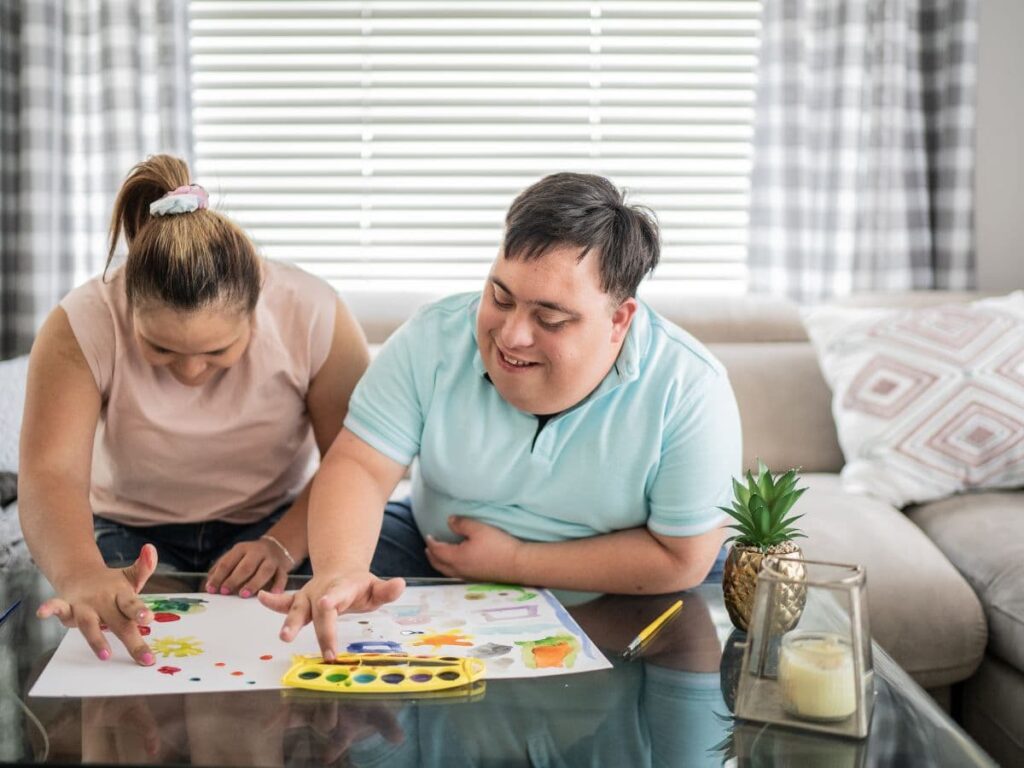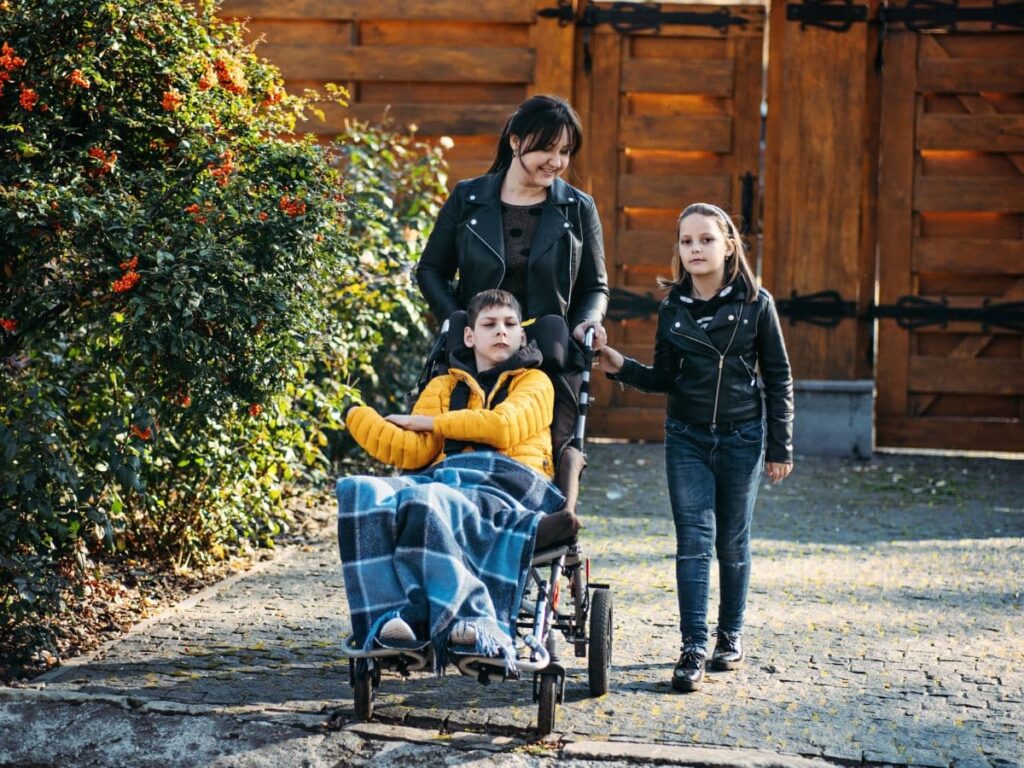Planning for the future can sometimes feel like wandering through a forest blindfolded, with both hands tied behind your back. That’s how it often feels for individuals with developmental disabilities and their families.
But I’m here to help! In this guide, we will explore useful resources and strategies that can make future planning more manageable and, dare I say, even enjoyable. So grab a cup of your favorite beverage, and let’s explore this together!
Creating a Special Needs Trust

What’s a Special Needs Trusts?
A special needs trust is like a safety net, ensuring that individuals with developmental disabilities have financial resources without losing eligibility for government benefits. It’s super important because many benefits, like Medicaid and Supplemental Security Income (SSI), have strict asset limits.
How to Set It Up
Setting up a special needs trust might sound daunting, but it’s easier than you think! Here’s a simple breakdown:
- Consult a Professional: Start by talking with an attorney who specializes in special needs planning. They’ll help you draft the trust document.
- Choose a Trustee: This person will manage the trust when you can no longer. It could be a family member or a professional trustee.
- Fund the Trust: You can add assets like cash, property, or life insurance policies.
Guardianship and Alternatives

To Guardianship or Not to Guardianship?
Guardianship provides a legal way to make decisions on behalf of someone who may be unable to do so themselves. It sounds serious because it is, but it’s not the only option. Alternatives, such as a power of attorney or supported decision-making, can offer more independence.
You might find there’s a bit of a stigma around guardianship and the perception of removing someone’s choices. We came across this while figuring out what’s best for Ian—there are some strong opinions out there! Just remember, you understand your loved one and their needs better than anyone else. Don’t lose focus on that.
Implementing Guardianship
Here’s a quick guide to navigating this process:
- Assess the Need: Consider whether full guardianship is necessary or if a less restrictive option would work.
- Legal Process: If you decide on guardianship, you’ll need to file a petition in court. An attorney can help with this, or your local or state developmental disability service agency can sometimes walk through it with you.
- Consider Alternatives: Supported decision-making agreements involve the individual in decisions, promoting independence, or power of attorney agreements can provide a more balanced solution. These options are ideal for anyone who wants to maintain their independence but appreciates some support from time to time.
Related: Understanding Guardianship: What Parents Need to Know | Top 5 Online Resources to Help Families with Future Planning
Residential Planning

Finding the Right Home Sweet Home
Where we live really impacts our happiness. For individuals with developmental disabilities, finding the right place to call home is crucial. Whether it’s living on their own, in a group home, or something in between, there are choices out there.
We’re just starting this phase of the journey with Ian. Some days, we’re excited and full of hope. But honestly, most days, we’re just freaked out by all the unknowns. Having a plan and knowing we have a say in his forever home calms the nerves—a bit.
Steps to Residential Planning
- Explore Options: Online resources like Autism Housing Network and Autism Housing Pathways are a great place to start exploring what is out there (both of these resources are designed to be used by anyone). Visit local facilities and homes in your area. Your local developmental disability agency can be a helpful place to start or talk to others who’ve gone through the process.
- Plan Financially: Begin by considering the budget required for your loved one to reside in the community and how to finance that budget. Explore options such as SSI, Medicaid Waivers, employment opportunities, and more.
- Transition Slowly: If possible, gradually transition into the new living situation to ease the change. If that’s not an option, at least chat with your loved one about it. Get them comfortable with the idea and join in the discussion.
Related: Do Adults with Developmental Disabilities Have to Live with Family? | Life After High School for Young Adults with Developmental Disabilities
Employment and Day Programs

Work and Play
Having a job or participating in day programs can provide purpose and routine. It’s not just about earning money; it’s about engaging with the community and building skills.
Making It Happen
- Explore Interests: What do they love doing? Let that lead you to the right programs. Some day programs are located in rural areas, emphasizing farm life, while others are integrated within the community.
- Tap into Local Resources: Your state or county might offer employment initiatives focused on integrated community employment for adults with developmental disabilities. Plus, your local developmental disability agency could offer a directory that lists the day programs in your area.
- Consider Job Coaching: A job coach can offer support and guidance, making the workplace more accessible.
Creating a Complete Care Plan

A One-Stop Guide
Could someone easily step in and handle your loved one’s care if you weren’t there? If the answer is no, maybe it’s time to change that.
Think of a complete care plan as a handy guide that covers everything from healthcare needs to personal quirks and emergency contacts, so anyone can seamlessly take over.
Crafting Your Care Plan
- Gather Information:
- Personal information (contact details for parents, doctors, and emergency contacts)
- Medical details (history, medications, allergies, insurance)
- Daily routines (schedule, rules, meals)
- Activities and preferences (hobbies, comfort items)
- And any necessary financial or logistical information, including passwords, usernames, and account details
- Review Regularly: Life changes, and so should the plan. Keep it updated!
So, there you have it—a guide to help you navigate the future with a little less stress and hopefully a lot more confidence. It’s a journey that requires thought, care, and a bit of courage. But with these ideas in your toolkit, you’re well on your way to creating a brighter future for your loved one.
Now, let’s keep the conversation going: What strategies have you found helpful in your planning journey? Remember, your experiences and insights could be just the encouragement someone else needs!
SHARE ON:


